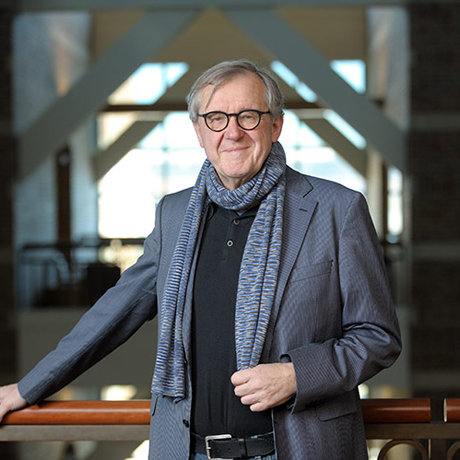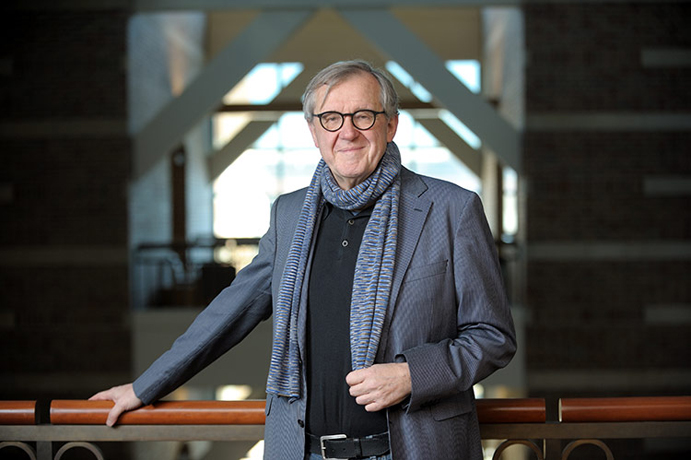Dr. Klaus Schulten
The article Supercomputer Maps One Million Atoms of a Complete Virus in First Simulation of a Life Form said
“For the first time, researchers have visualized the changing atomic structure of a virus by calculating how each of the virus’ one million atoms interacted with each other every femtosecond — or one-millionth-of-a-billionth of a second. A better understanding of viral structures and mechanisms may one day allow researchers to design improved strategies to combat viral infections in plants, animals and even humans.Led by Klaus Schulten at the University of Illinois at Urbana-Champaign, the team tapped the high-performance power of the National Center for Supercomputing Applications (NCSA) processors to accomplish the task. Still, it took about 100 days to generate just 50 nanoseconds of virus activity. Schulten says it would have taken the average desktop computer 35 years to come up with the results.”
Dr. Klaus Schulten, FAPS is Swanlund Professor of Physics and is also affiliated with the Department of Chemistry as well as with the Center for Biophysics and Computational Biology at the University of Illinois at Urbana-Champaign. He is a full-time faculty member in the Beckman Institute and directs the Theoretical Biophysics Group there.
His professional interests are theoretical physics and theoretical biology. His current research focuses on the structure and function of supramolecular systems in the living cell, and on the development of non-equilibrium statistical mechanical descriptions and efficient computing tools for structural biology.
Klaus coedited Models of Neural Networks II : Temporal Aspects of Coding and Information Processing in Biological Systems (Physics of Neural Networks), Mathematical Approaches to Biomolecular Structure and Dynamics (The IMA Volumes in Mathematics and its Applications), Models of Neural Networks III : Association, Generalization, and Representation (Physics of Neural Networks), and coauthored Neural Computation and Self-Organizing Maps: An Introduction (Computation and neural systems series).
Many of his publications are available for free online including Control of the selectivity of the aquaporin water channel family by global orientational tuning, Energetics of glycerol conduction through aquaglyceroporin GlpF, and Excitons in a photosynthetic light-harvesting system: A combined molecular dynamics, quantum chemistry and polaron model study.
Klaus earned his bachelor’s degree in physics from the University of Muenster, Germany in 1969, and a Ph.D. degree in chemical physics from Harvard University in 1974. He was awarded the Humboldt Award of the German Humboldt Foundation (2004), University of Illinois Scholar (1996) — the highest research award at the University of Illinois; Fellow of the American Physical Society (1993), and Nernst Prize of the Physical Chemistry Society of Germany (1981).

